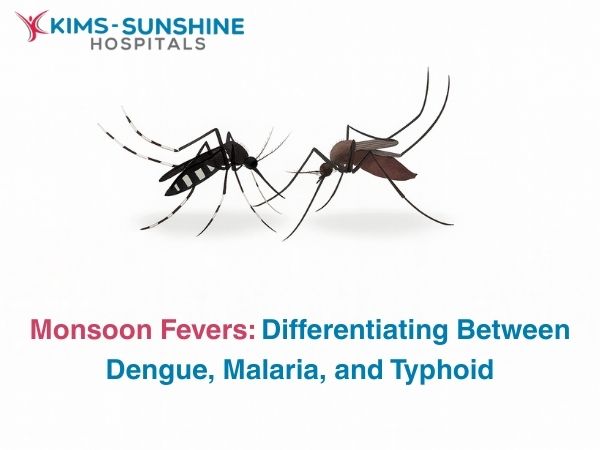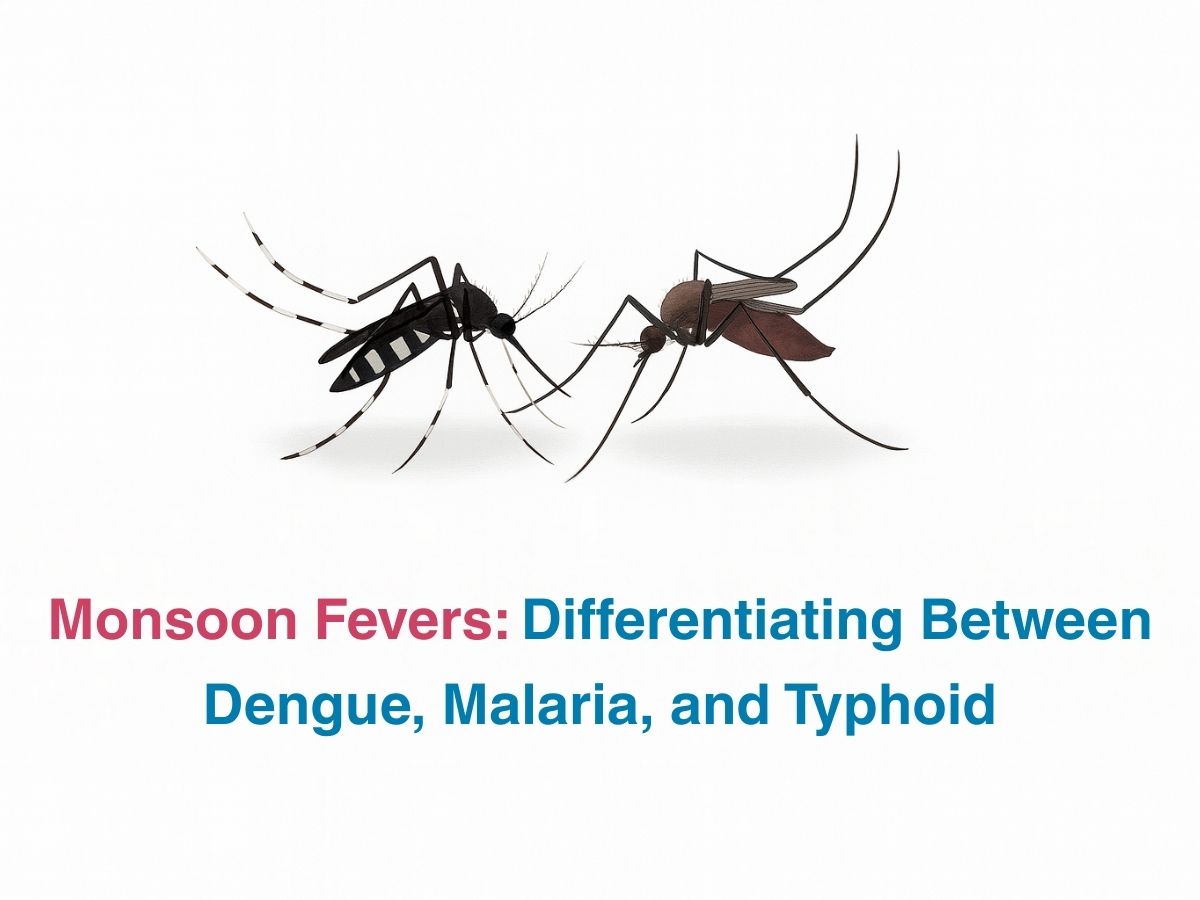
Monsoon Fevers: Differentiating Between Dengue, Malaria, and Typhoid

India is a tropical country with various seasons. Monsoon in India has high risks of carrying water borne diseases like typhoid, dengue, malaria etc. These fevers mostly happen in areas which are mostly marshy and wet or in places where there is stagnation of water. The factors contributing to such fevers include high humidity, contamination of water and food, weak immunity due to climatic changes.
Diseases like dengue and malaria are vector borne . These fevers happen when there is an involvement of a medium like mosquito and typhoid is mostly due to bacterial infection because of water contamination.
These monsoon fevers are most commonly diagnosed and treated in the rainy seasons especially from June to September. India contributes around 34% of world dengue fevers and 11% in malarial cases.
Along with these common types of fevers, other infections like gastroenteritis, leptospirosis, influenza etc. are some other diseases which are commonly seen during this season.
Symptoms Of Dengue, Malaria And Typhoid
Dengue: Caused by dengue virus which is carried by the Aedes mosquito, it appears distinctively black and has white spots on its legs, back and thorax. This virus destroys your blood cells- causing blood clots and blood leaks or haemorrhages to occur. Symptoms can start from 4 to 10 days after the mosquito bite.
- Rashes
- Intense pain in eyes
- Nausea and vomiting
- High grade fever
- Muscle, bone and joint pain
If the fever becomes severe and is not treated, then the affected person goes into haemorrhagic shock or severe dengue within 24 to 48 hrs, where it causes stomach pain, frequent vomiting of blood and blood in stools, nose bleeds associated with extreme tiredness, restlessness and irritability.
Malaria: Caused by the plasmodium parasite, which is hosted by the female anopeles mosquitoes. There are many variants of this parasite, which makes the fever appear in peculiar cyclic waves. According to this cyclic appearance it can help your doctor differentiate the variant of plasmodium parasite involved in causing these symptoms.
- Fever
- Shivers and Chills which is peculiar to malaria
- General fatigue and weakness
- Headache
- Nausea and vomiting
- Diarrhoea
- Abdominal pain
- Muscle or joint pain
- Rapid breathing and heart rate
Typhoid: It is a water borne infection caused due to ingestion of water contaminated with salmonella typhi bacterium. It mainly infects the gastro-intestinal tract – especially the intestines. The name typhoid means a high fever that can last for weeks if left untreated. This fever has 4 stages; the infection can appear from 5 to 14 days after coming in contact with the bacteria.
- Headache
- Chills
- Loss of appetite
- Stomach and abdominal discomfort
- Rose spots or rash on the chest and stomach
- Muscle aches
- Nausea and vomiting
- Diarrhoea or constipation
- Extreme loss of weight
- Hair fall
Monsoon Fever Panel Blood Tests: (For Dengue, Malaria And Typhoid)
- Complete blood count
- NS-1 and dengue antibodies(IgG & IgM)
- Malarial antigen test
- Peripheral blood smear
- Typhi-dot for typhoid antibodies(IgM & IgG)
- WIDAL test
- Inflammations marker like CRP(C-Reactive protein test)
- Liver Function Tests
How To Prevent These Deadly Infections
- Following hygienic measures for self and surroundings
- Safe drinking water by boiling and filtering
- Boiling food or washing them before eating.
- Don’t eat any raw foods from out.
- Elimination of stagnant water as it can be a breeding ground for mosquitoes.
- Keeping the surroundings dry and clean.
- Using mosquito repellents or protective clothing
- Eat healthy and clean food to improve immunity
Conclusion
Monsoon is a very humid season and most of the parasites, insects, viruses and bacteria thrive in such an environment. Avoiding these infections can be done only with hygienic lifestyle habits and improving our immunity by consuming a healthy, balanced diet. Fever may appear common during monsoons as many other types of viruses also affect individuals, but any fever that stays for longer than 48hrs should be checked out and should NOT be neglected.






